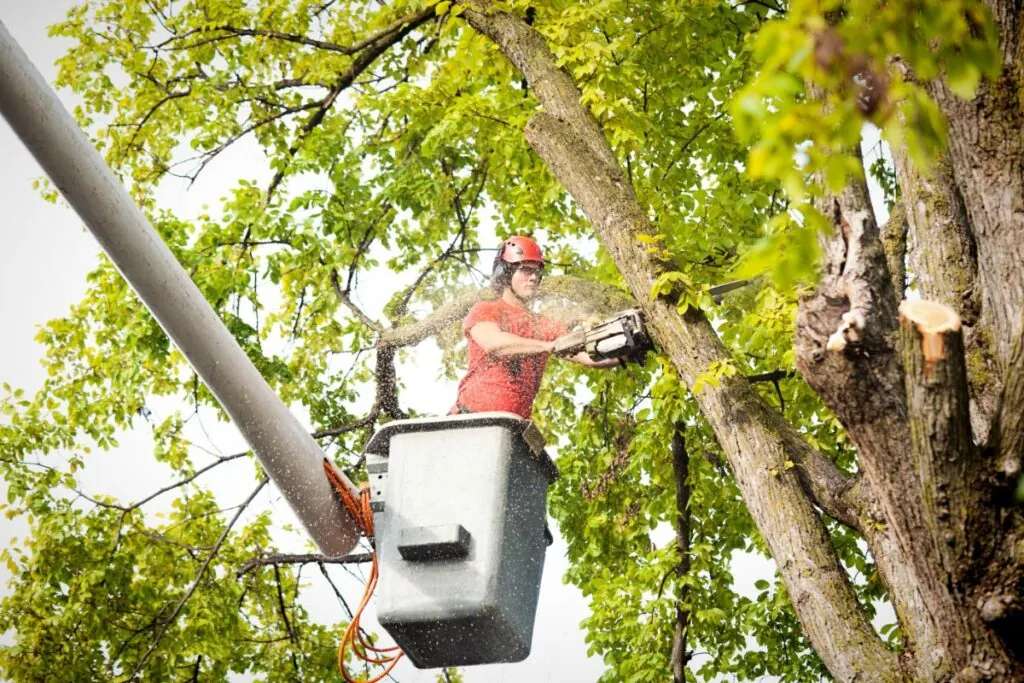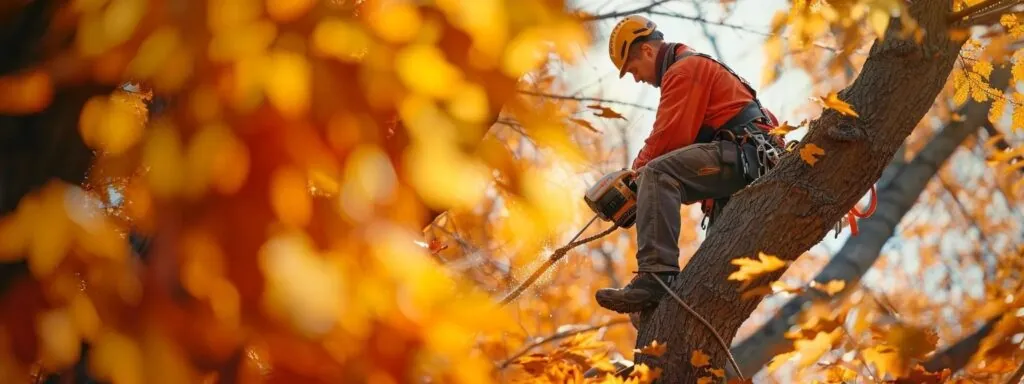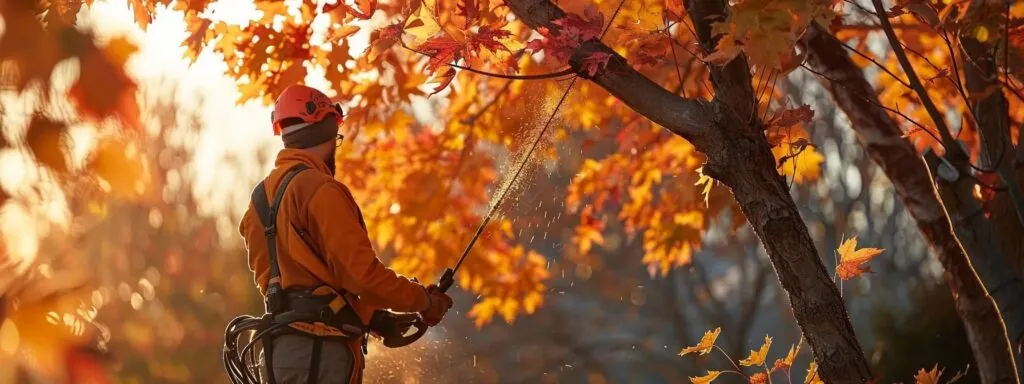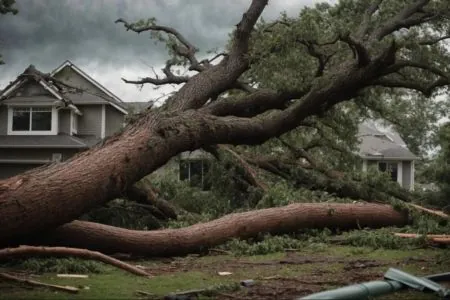Knowing when to trim your trees can significantly affect their health and appearance. If you have ever wondered when the best time of year for tree trimming is, you are not alone. Many homeowners struggle with determining the right season to prune without harming their trees. Trimming at the wrong time can lead to stress on branches or stunted growth, while proper timing ensures your trees grow stronger and more beautiful.
This article offers a seasonal breakdown so you will know precisely when to trim for the best results. Whether you are tidying up branches before winter storms or shaping your landscape for spring, we have practical advice to keep your trees in peak condition year-round. We will also discuss factors like weather, species type, and common mistakes to avoid so you can feel confident tackling your tree care routine.

With the proper knowledge, tree trimming becomes less of a chore and more of an opportunity to protect and enhance your outdoor space. So, let’s dive in—choosing the right time to trim is the key to healthier, safer, and better-looking trees.
Key Takeaways
- Trimming at the right time ensures healthy growth, while trimming at the wrong time can stress the tree.
- Most trees benefit from winter trimming when they are dormant, minimizing sap loss and promoting vigorous regrowth.
- Some trees bloom early, and improper trimming can affect flowers and new growth.
- Regular trimming reduces the risk of storm damage by eliminating weak or overgrown branches.
Why Timing Matters for Tree Trimming
Trimming your trees isn’t just about improving their look—it’s also about ensuring their health and safety. When you trim, the timing is critical in how well your trees recover, grow, and resist disease. Seasonal conditions affect how much energy a tree can devote to healing after pruning. Choosing the right time minimizes stress, encourages healthy development, and reduces risks like infections. In this section, we’ll dive into why getting the timing right matters and what can go wrong if you trim at the wrong time.
What Happens When You Trim Trees at the Wrong Time?
Pruning at the wrong time can leave trees vulnerable to damage. If trees are trimmed in the wrong season—such as late fall—they may struggle to heal before winter arrives, increasing the chance of disease or frost damage. Similarly, pruning too early in spring can reduce new growth, stunting the tree’s development and diminishing flowers or fruit production. Over-pruning can expose trees to too much sunlight during summer, leading to sunburn on the bark. Incorrect timing also attracts pests and infections, as open wounds may not heal quickly. Each tree has its rhythm, and pruning outside these cycles can do more harm than good.
Best Seasons for Tree Trimming
Knowing the best season for tree trimming helps you make decisions that benefit both the tree’s health and the aesthetics of your yard. Different seasons affect tree growth in unique ways, and trimming at the right time minimizes stress while promoting recovery. Weather patterns, energy cycles, and species types all play a role in determining the ideal pruning season.
Winter: The Ideal Time for Most Trees
Winter is often the best time for trimming because most trees enter dormancy, slowing their growth and reducing sap flow. Trimming during this period lowers the risk of infection since insects and diseases are less active in cold temperatures. Without leaves, the tree’s structure becomes more visible, making it easier to identify problem branches and be more precise and intuitive with where cuts are made ad what branches are removed. Winter pruning also encourages vigorous new growth in the spring, setting the tree up for a robust growing season.
Spring Trimming: Handle with Care
Spring trimming requires careful consideration since it coincides with new growth. Pruning too early can damage young buds and reduce the chances of flowering or fruit production. Some trees, such as flowering cherries or magnolias, should not be pruned in early spring, as this will remove their blooms. However, light trimming of dead or damaged branches is acceptable once the tree has started leafing out so long as too much cutting is not done. Pruning should be completed before the tree fully awakens from dormancy to minimize stress on its new growth.
Summer Trimming: Focus on Safety and Appearance
Summer trimming helps improve a tree’s shape and eliminate hazardous branches. During this season, it is easier to spot damaged or dead limbs that may pose a safety risk during storms. Light pruning can also enhance the tree’s appearance by controlling overgrowth and allowing more sunlight to reach the ground. However, care must be taken to avoid excessive trimming, which can expose the tree to heat damage. Fruit trees, in particular, benefit from summer pruning to thin out dense areas and improve airflow, preventing disease.
Fall Trimming: Proceed with Caution
Fall is generally not recommended for heavy tree trimming, as trees prepare for dormancy by storing energy. Pruning during this time can interrupt their natural processes, weakening the tree before winter. It can also delay the healing of pruning wounds, making the tree susceptible to disease and pest infestations. However, fall trimming may be necessary to remove dead or broken branches after storms or to prevent hazards. If pruning in the fall, it is essential to limit cuts to only what is necessary to reduce tree stress or protect the property.
Must Read: Why Is It Important To Prune Your Trees?
Understanding Tree Species and Trimming Needs

Different tree species have unique growth patterns and pruning requirements, making understanding your tree’s specific needs essential. For example, oak trees should only be trimmed in winter to avoid oak wilt, while fruit trees benefit from both winter and summer pruning to control growth and improve fruit yield.
Knowing your tree species ensures you prune at the right time and in the correct way. Some trees heal slowly and require minimal cuts, while fast-growing species can handle more frequent trimming. Researching your tree type helps you avoid common mistakes and promotes healthier, long-term growth.
Tree Trimming for Safety and Health
Trimming trees is not just about aesthetics—it also plays a crucial role in keeping your trees healthy and your property safe. Regular pruning removes weak or damaged branches that can spread disease or cause accidents during storms. Whether trimming to prevent infections or preparing for extreme weather, timely care ensures your trees remain strong and resilient.
Trimming for Disease Prevention
Pruning diseased branches early prevents infections from spreading to the rest of the tree. Dead or decaying limbs create entry points for fungi, bacteria, and pests that can compromise the tree’s health. By cutting away affected areas, you limit exposure and allow the tree to focus energy on recovery. Seasonal trimming is also essential—dormant season pruning reduces the risk of disease spread since many pathogens and pests are inactive in colder weather. Proper sanitation, like disinfecting pruning tools, further helps in controlling disease.
Storm Preparation
Storms can cause severe damage to trees, especially if they have weak or overgrown branches. Trimming before storm season reduces risks by removing hazardous limbs that could fall and cause injuries or property damage. Thinning out the canopy also allows wind to pass through, lowering the chance of uprooting. Regular pruning helps maintain a tree’s structure, ensuring branches grow evenly and reducing the likelihood of breakage during severe weather. Addressing these issues early keeps your property safer and minimizes costly cleanups after storms.
Similar Post: Why is Tree Trimming So Expensive? Unraveling the Costs and Benefits
Conclusion: Choosing the Right Time for Tree Trimming

Timing is everything when it comes to tree trimming. Pruning during the right season promotes healthy growth, reduces disease risk, and ensures your trees stay safe and beautiful year-round. Whether it’s winter trimming to encourage regrowth, summer pruning for safety, or careful spring and fall maintenance, understanding the seasonal needs of your trees makes all the difference.
Aligning your trimming schedule with your tree’s species and environmental conditions will maintain a healthy landscape while preventing unnecessary damage. Thoughtful pruning protects your property, enhances curb appeal, and keeps your outdoor spaces thriving for years to come.
Frequently Ask Questions
1. What month is best to trim trees?
For most trees, the best time to trim is during the winter months, typically between late November and early March. During this period, trees are dormant, meaning they are not actively growing, which minimizes sap loss and reduces stress. Winter trimming also lowers the risk of disease, as pests and pathogens are less active in cold weather. Additionally, without leaves, it’s easier to see the tree’s structure and make precise cuts.
2. Is it better to trim trees in the fall or spring?
Trimming in late winter or early spring is often preferred over fall. Trees in the fall are storing energy for winter, and trimming them can disrupt this process, weakening them and making them more susceptible to disease and frost damage. Spring trimming is acceptable but should be done before the tree fully “wakes up” from dormancy to avoid damaging new growth and buds. For more detailed guidance, consider consulting a professional service like tree trimming Canton MA.
3. When should you not cut tree branches?
You should avoid cutting branches during late fall, as trees are preparing for winter dormancy. Pruning during this period can stress the tree and make it vulnerable to disease and frost damage. Additionally, you should not prune certain trees, like oak trees, in the warmer months due to the risk of oak wilt—a fungal disease that spreads more readily in warmer weather.
4. Is it okay to trim trees in summer?
Yes, light trimming in the summer is acceptable, particularly for shaping the tree, removing hazardous branches, or improving airflow. Summer pruning can also be beneficial for fruit trees to thin out overgrown branches and improve fruit yield. However, avoid excessive pruning in summer, as this can expose the tree to sunburn, especially on sensitive bark.
5. When should you not prune?
Avoid pruning during the late fall, as it can interfere with the tree’s preparation for winter. For some species, such as maples, elms, and birches, it’s best to avoid pruning in early spring because of the heavy sap flow. Additionally, avoid trimming in summer if the weather is extremely hot, as pruning can expose inner branches and bark to sun damage.
6. What happens if you prune a tree at the wrong time?
Pruning at the wrong time can stress the tree, making it more vulnerable to pests, diseases, and environmental damage. For instance, trimming too late in the fall can leave open wounds that don’t heal before winter, increasing susceptibility to frost damage. Pruning too early in spring can damage new growth and reduce flowering or fruit production.





